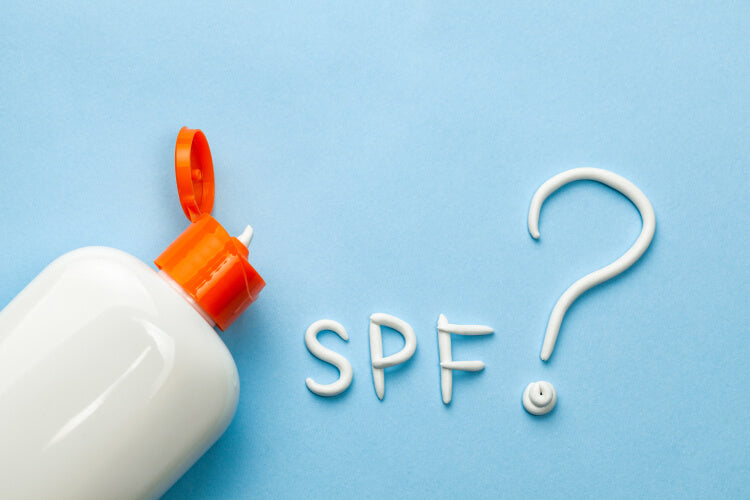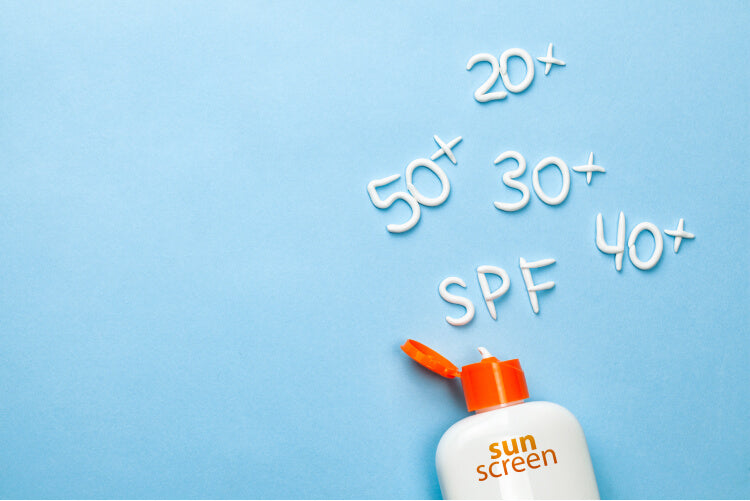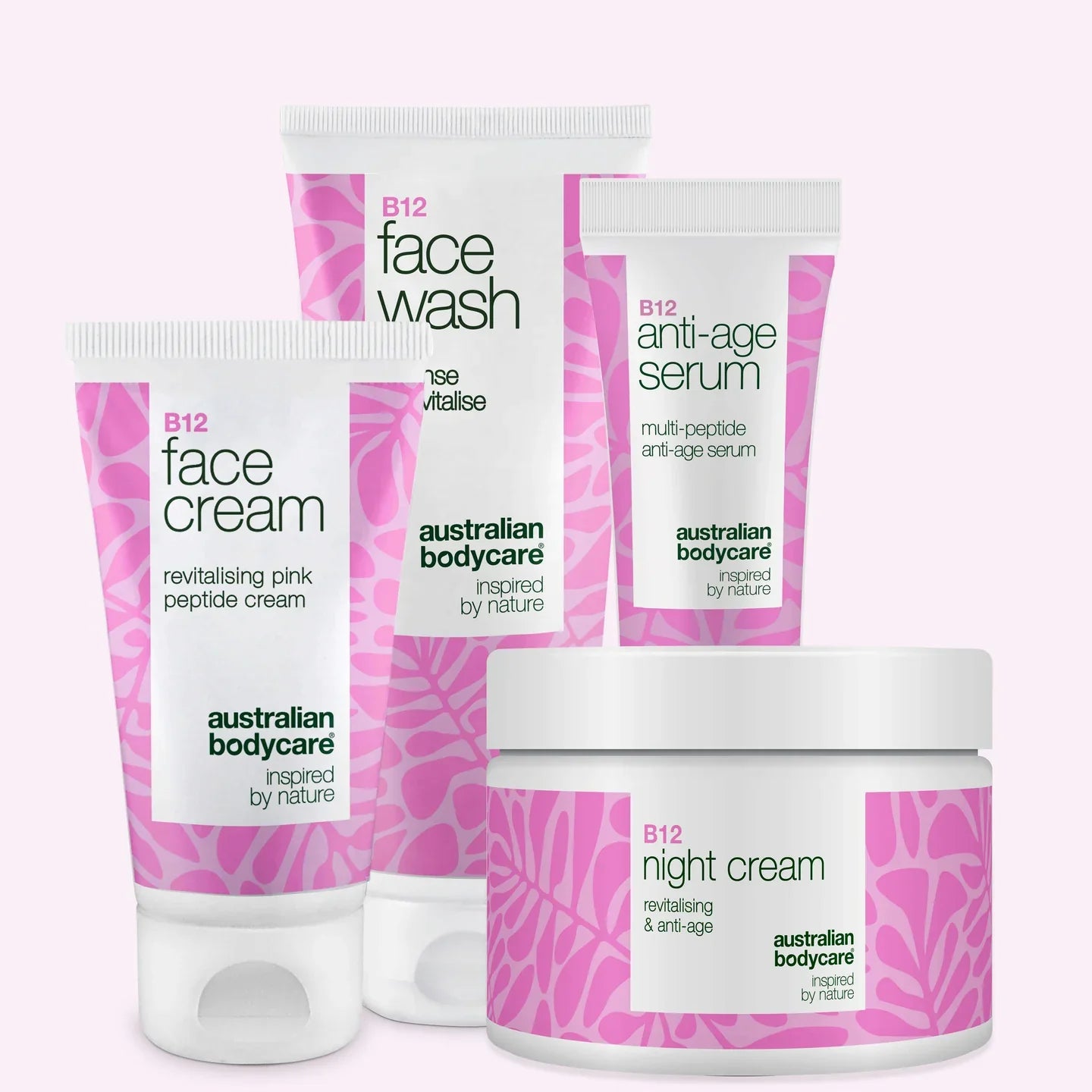Guide to Sun Protection Factor: Everything About SPF 15, 30, and 50
Sun protection factor (or SPF for short) shields our skin from the sun's rays. This article unpacks what SPF means and how to pick the right protection for you. SPF measures a sunscreen’s ability to fend off UVB rays.
For instance, SPF 30 blocks 97% while SPF 50 stops 98% of UV rays. Remember, sunscreen is recommended for protection, not to increase your time in the sun. Depending on your skin type, you might use SPF 15 for tanned/golden skin, SPF 30 for fair skin, and SPF 50 or higher for very fair skin, especially under strong sunlight.
Table of contents
What is SPF (Sun Protection Factor)?

SPF, also known as Sun Protection Factor, indicates how well the sunscreen can protect your skin from harmful UV rays from the sun. It tells you how much longer you can stay in the sun without burning compared to having no protection at all.
The Difference Between UVA and UVB
UVA rays penetrate deep into the skin and can cause aging. They’re present even on cloudy days. UVB rays hit the surface of the skin and can lead to sunburn. These rays are strongest midday.
Protecting against both types of ultraviolet rays is crucial. UVA can harm the deeper layers of your skin. UVB affects the outer layer and can quickly cause redness. Choose a sunscreen that covers both types to keep your skin safe.
How SPF is Calculated
To understand how SPF is calculated, you need to know what SPF stands for: Sun Protection Factor. This number indicates how much sunscreen can protect the skin from UVB radiation, which is the type of solar radiation that causes sunburn.
An SPF value, such as 15, means you can be in the sun 15 times longer before your skin turns red compared to without protection.
The calculation is based on the amount of UVB radiation your skin can tolerate without sunscreen and then multiplies this by the SPF value to find the protection time. A sunscreen with SPF 30 will block about 97% of UV rays, while one with SPF 50 blocks around 98%. This clearly shows how a higher SPF number offers more protection. But remember to reapply sunscreen regularly – especially after swimming or if you sweat.
Which SPF Should You Choose?

When choosing an SPF, consider your skin type and sun exposure. Sun protection with a higher SPF is ideal for people with fair or sensitive skin, as well as those who spend more time in direct sunlight.
SPF 15, 30, or 50?
Choosing the right SPF is crucial for protecting your skin from harmful UV radiation. Your skin type and the UV index play a significant role in this decision.
- SPF 15 is great for people with golden or tanned skin. This level of protection lets you stay in the sun 15 times longer than without any protection. But remember, it only blocks about 93% of UVB rays.
- SPF 30 is recommended for people with fair skin. It helps block about 97% of UVB radiation from the sun. This level of protection is particularly important if you plan to spend extended periods outdoors.
- SPF 50 offers the highest degree of protection recommended for daily use and is ideal for very fair skin or in conditions with a high UV index. This level of sun protection blocks about 98% of UVB rays.
Each SPF should be applied correctly for full effectiveness. This means generous amounts and reapplication every two hours, especially after swimming or sweating. Your skin type and outdoor activity level should determine which SPF you choose.
Always use a broad-spectrum sunscreen that protects against both UVA and UVB rays, regardless of the SPF level. Light skin requires more attention under strong sunlight. Sun protection products come in various forms, including lotions, sprays, and sticks, so choose the format that best suits your lifestyle.
The UV index also varies by location and season, so check the local weather forecast or an app for guidance on today’s risks from ultraviolet radiation before heading outdoors.
How Does Choosing an SPF Affect Your Skin?
The choice of SPF directly impacts the protection of your skin against the sun’s harmful rays. A higher SPF offers better protection against both UVA and UVB rays and reduces the risk of sunburn, sun rash, and long-term damages like premature aging and skin cancer.
It’s important to choose the right SPF according to your skin type and the current weather conditions, as lighter skin and stronger UV indexes require a higher sun protection factor for effective protection.
When choosing an SPF, consider your personal skin needs and the environment you’re in. It’s essential to understand that choosing an SPF is not just about preventing sun damaged skin but also about preventing long-term damage to your skin.
How Does Sun Protection Factor Work?
Sun protection factor functions by blocking or absorbing UV light to protect the skin from damage. A higher SPF sunscreen extends the time it takes for the skin to redden, and applying it correctly is crucial for effective protection.
Protection Time for Different SPFs
The protection time offered by sunscreens varies depending on the product's SPF. This is essential to ensure optimal protection from the sun’s rays. Here’s a quick guide on how long you can expect different SPFs to protect your skin:
| SPF | Protection time (approximately) |
|---|---|
| 15 | 150 minutes |
| 30 | 300 minutes |
| 50 | 500 minutes |
It's important to remember that the actual protection time can vary due to factors such as skin type, activity level, and how much cream you apply. An SPF of 30 blocks about 97% of the sun's UV rays, while an SPF of 50 blocks about 98%. Therefore, the choice of SPF should be tailored individually. Always reapply sunscreen after swimming or sweating to ensure the protection is maintained. Correct and regular use of sunscreen is key to effective protection against the sun’s harmful rays.
Correct Application of Sunscreen
To apply sunscreen correctly, follow these steps:
1. Apply a generous amount of sunscreen to all exposed areas of the skin to ensure adequate protection.
2. Spread the sunscreen evenly and massage it into the skin to ensure it's effectively absorbed.
3. Apply sunscreen at least 15 minutes before going out in the sun to allow it time to penetrate the skin.
4. Reapply sunscreen every two hours, or after swimming or sweating, for continued protection.
5. Remember to cover often forgotten areas like feet, ears, and neck for comprehensive protection against harmful UV rays.
Always read the product instructions carefully for optimal effectiveness.
Conclusion
Choose the right SPF for your skin type to avoid sun damage. Apply sunscreen regularly and correctly to protect yourself from UV radiation. Remember that children and the face need extra protection.
Don’t forget that sun protection is an essential part of skincare.
FAQ
What is the difference between SPF 30 and 50?
SPF 30 blocks about 97% of UVB rays, while SPF 50 blocks about 98%. SPF 50 offers slightly higher protection against sunburn than SPF 30.
What SPF should be used for the face?
For the face, a sunscreen with an SPF of 30 or higher is recommended to provide effective protection, especially for sensitive skin or during prolonged sun exposure.
What is the UV index?
The UV index measures the strength of the sun's UV radiation on a scale from 1 to 11+, where higher numbers indicate stronger UV radiation and an increased risk of skin damage.
How high does the UV index need to be before you start tanning?
You can start to tan at a UV index of 3, but the higher the index, the quicker and more intense the tanning will typically be. Regardless of the UV index, it is important to use sun protection to avoid skin damage.
How much UV is there in a Tanning bed?
Tanning beds emit high concentrations of UVA and UVB rays, often more intensively than natural sunlight, increasing the risk of skin damage and skin cancer.
Do UV rays come through a window?
Yes, UVA rays, which can contribute to skin damage and premature aging, can penetrate ordinary window glass. However, UVB rays, which cause sunburn, are largely blocked by glass.



